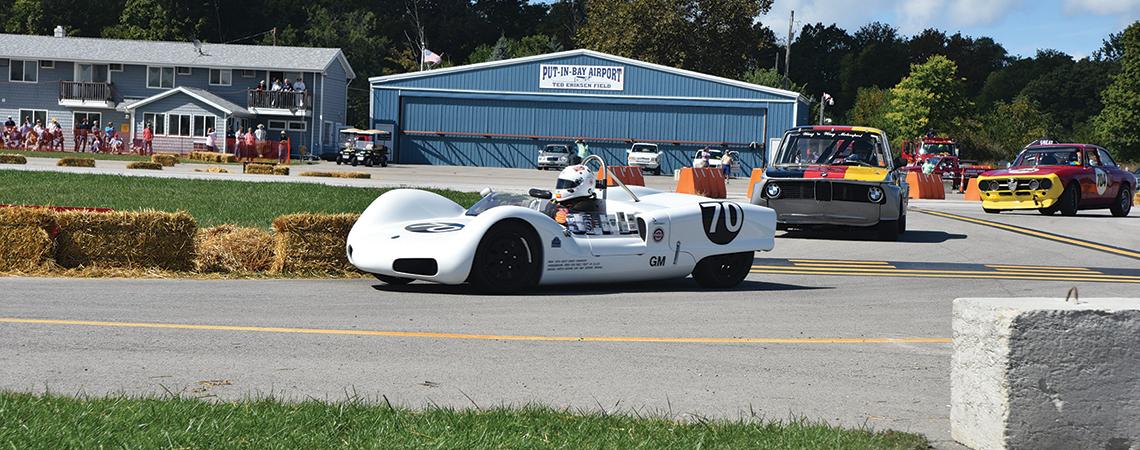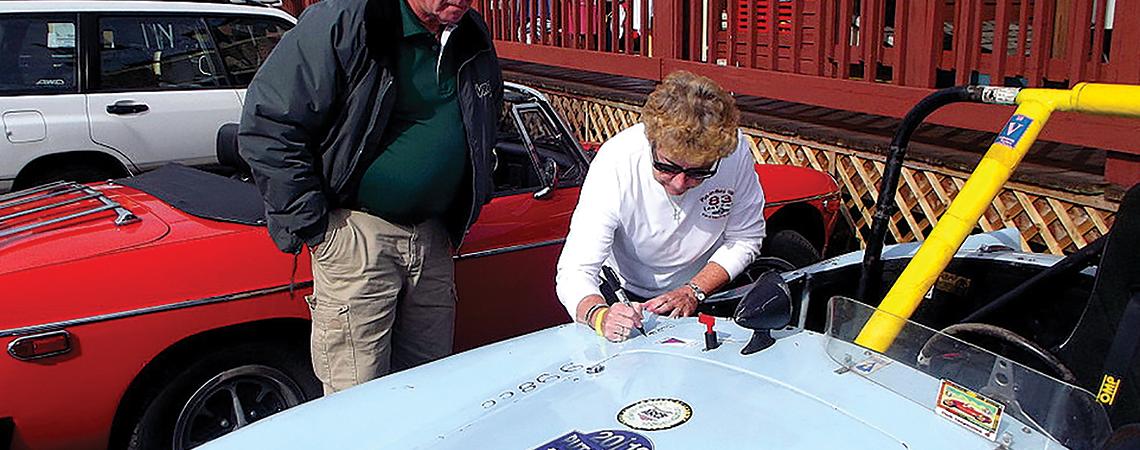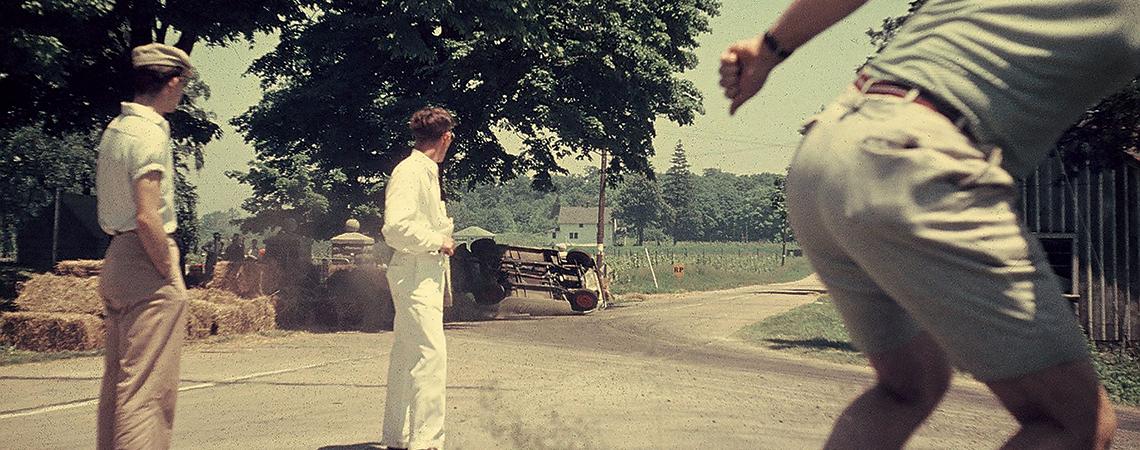Years ago, Lake Erie’s South Bass Island was abuzz with fast, exotic imports once a year for a decade. While more than a thousand spectators stood along a perilous 3.1-mile public road course, racers sped past at up to 140 mph in cars made by Morris Minor, Lotus, Bandini, Porsche, Izetta, Cooper Climax, and Frazer Nash, taming its curves and making its straightaways even straighter.
This year, they plan to be there again.
If coronavirus doesn’t kill the racing bug (it was still scheduled as of early July), the island will host racers and connoisseurs of cool, vintage small-bore European cars Sept. 22 through 25 for the 12th annual Put-in-Bay Vintage Sports Car Races, known informally as the Road Race Reunion.
The airport is now home to the races, and although these aren’t airplanes, they still fly. (Photo by James Proffitt.)
“I certainly hope it goes forward, because we’re planning for it,” says organizer Manley Ford (who drives a 1952 MG TD). “There’s always a lot of excitement, and we’ve already got quite a few registered.”
Since 2009, Ford and others have worked to re-create the historical street races that ran on the island from 1952 to 1959, then once again in 1963. A 1953 Road & Track article dubbed Put-in-Bay “A Little Watkins Glen.” However, try as they may, the days of street racing at Put-in-Bay are over. Most drivers can only hope for a “hot” lap around the old race route and a little exhibition time on the pavement.
That doesn’t mean there’s no real, honest-to-goodness, wheel-to-wheel racing — it’s now confined to the island’s airport.
The current iteration of the event started as just a reunion in 2009. The next year it was racing again. After receiving permission from regional FAA officials, drivers competed on the runways. Later, racers learned they actually needed FAA permission from Washington, D.C. But that’s all been ironed out. Each autumn, more than 100 vintage race cars land at the airport and have free run of the place.
With caveats, of course. Like when the mail comes.
“Traditionally, the mail plane arrives at 9 a.m. on a weekday, so we have to let the airplane come and go,” says Ford. That includes removing hay bales and other racing paraphernalia from the runway. “Neither rain nor snow nor heat nor vintage racing stops the U.S. Mail.”
Peter Huston, Put-in-Bay Chamber of Commerce director, describes the event as a well-choreographed celebration of all things vintage cars.
“There are people here who come with a 1963 Corvair or a 1971 MG and they’re hanging out with people who come with multi-million-dollar collectors’ cars,” he says. “When you have a common interest, any social standing seems to dissipate in the air. You love seeing them, talking about them, learning about them.”
Carol Clemens loves them, too. She used to race. In fact, she’s the only woman ever to compete at Put-in-Bay, having raced the very last year. “When the starter dropped the flag, everyone left but one car, so it was a chain reaction,” she recalls. “I ended up running into the car in front of me, made two passes, then pulled into the pit where my father ripped off the headlights, which were broken, and I went back out. I didn’t want spectators hurt if the lights fell off, so it felt like the right thing to do.”
For an average driver, that could have meant finishing near last. But Clemens, who was a qualified Sports Car Club of America driver, placed third. Afterward she re-installed her windshield and passenger seat and drove back to Michigan, since it was her only car — the one she in fact drove to work every day.
“It was a 1961 MGA I bought off the showroom floor for $3,200, white with red interior,” she gushes, with a lilting fondness in her voice, before going on to lament racing politics of the day. “At one point, the SCCA wouldn’t sanction the race because of the dangerous course. They forbade their drivers to race it, threatened to take the season’s points they’d earned.”
So, she says, drivers entered under fictitious names.
“It was a big joke. We had three Juan Faggios and a Marcus Gofast, and it was just fun,” she laughs.
But it was no laughing matter in 1963, when a crash ended the races for good.
“The guy was driving an Alva Mark 4. He lost control and ended up crashing into a tree and I don’t know, maybe the steps of the church. The car appeared to be destroyed,” Ford says, referencing historical accounts.
Clemens was there.
“We got a red flag, which means stop now and pull over immediately,” she says. “On the last race, the one I was in, that was the serious crash.”
Not much is known about the legendary (and some say “imaginary”) dog in the roadway, which the driver said he swerved to avoid.
“All I know is apparently when the safety crew got there, he was sitting under a tree smoking a cigarette,” Clemens frowns. “He wasn’t hurt and neither was anyone else, but that nixed it. Straw that broke the camel’s back. No more races at Put-in-Bay.”
Though no longer the bucolic farming community it once was, when drivers hit 140 mph on the fan-lined mile-long straightaway, the island’s still perfect for old, loud cars and their admirers.
At the sprawling car show at Heineman’s Winery, I wryly inform a 20-something police officer that I’d just witnessed an elderly man lay a mighty patch of rubber on a street nearby. He smiled, dutifully looking left and right across a sea of old, shiny cars, then briefly scanning Catawba Avenue.
“I’ll keep my eyes peeled for him, sir.”














